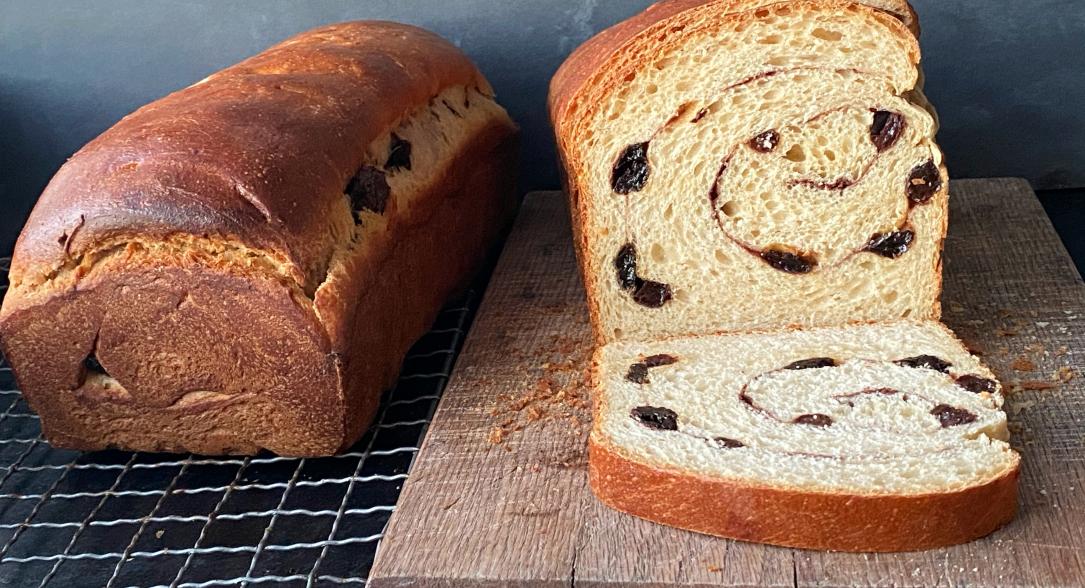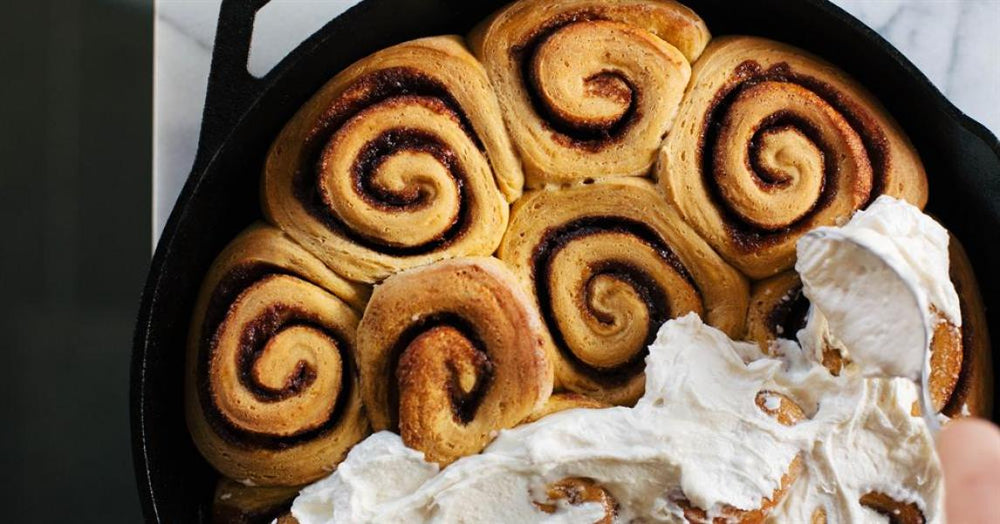Making the Most of Filled Breads
The only thing better than fresh, warm bread is fresh warm bread filled with extra deliciousness. From pigs in a blanket to cinnamon rolls to an elegantly swirled babka, filled breads create their own special occasions at the table. They’re not difficult to do, but there are some techniques to know that will give your breads (and your confidence) a boost.

Pay attention to texture
Most filled breads are made with enriched doughs that include butter, milk, a bit of sugar, and sometimes eggs or sour cream. The texture of the dough should be smooth and silky after its first rise, soft enough to pat into place without tugging. If it’s stiff or feels bouncy and snaps back when you try to move it around, it probably has too much flour in it. To work with dough like this, the best you can do is let it rest for 10 minutes when it starts to contract before gently stretching some more.
Grease, don’t flour
By lightly greasing the work surface with pan spray instead of dusting with flour, the dough moves around easily. It’s also harder to overwork it because it has no traction. Which brings us to…
Work gently
After the dough has had its first rise, it’s as relaxed as it can be. Don’t pay any attention to instructions that tell you to punch it down or knead it at this point. Simply turn it out onto your workbench and gently press it down and toward the shape your recipe calls for (usually that’s a rectangle of some kind). The more you handle the dough the more it will want to contract and the harder it will be to shape properly.
Roll, don't tug
After filling, the next step is to roll up the dough. This should be done without pulling or stretching it. Putting tension on the dough squeezes out the filling, makes loaves more likely to tear on top when they bake and, in the case of sweet rolls, creates peaked, pointy centers. (When the dough is too tightly wound it has nowhere to go but up when it expands in the oven).

Treats for all
The dough above is destined for a batch of sticky buns, with a filling made of sugar, cinnamon, and melted butter. When spreading the filling over the dough, leave a half an inch along the long edges uncovered. This lets the swirl get started properly in the center and ensures bare dough that will stick to the rolled-up log you’re going to make so you can properly pinch the edge to seal it. Cover the dough all the way to the short edges as you see on the right, to give those end pieces their due. The left edge of the dough, as shown, would be a sadly disappointing sweet roll, deprived of any filling.
On a roll
One of the challenges of filled spiral breads is how to pack in all the tasty goodness without creating a slice that falls apart. Recipes that call for brushing dough with butter before filling tend to unravel; the fat in the butter keeps the dough from sticking to itself. Instead, consider brushing the dough with milk as shown in the setup above, then sprinkling with a mixture of cinnamon sugar and flour. In this loaf, the filling helps keep the slices together instead of encouraging them to unravel.

Slice, don’t smush
How do you get that photo-worthy clean spiral? Skip the bench or serrated knife when slicing your cinnamon rolls and reach for some unflavored dental floss (fishing line works, too). The photo on the left shows what happens when rolls are cut with a knife: they get compressed and the filling can start to leak or ooze out. On the right are rolls that were cut with floss. Here’s how: Put a length of dental floss under the log of dough where you want to cut it. Cross the ends over each other on top. Pull the opposing ends of the floss until they slice up through the dough for a perfectly clean cut.
If you’ve never made a filled bread, give these Maple Pecan Sticky Buns or Sausage-Filled Cheese Rolls a try. With these hints to help you can make any filled bread better and more beautiful. The only limits to what you can make are your pantry and imagination!

Susan Reid
Chef Susan Reid is the food editor of Sift Magazine, a baking publication by King Arthur Baking Company. In her spare time, Susan shares some of her recipes on her blog, The Well Plated Life.






